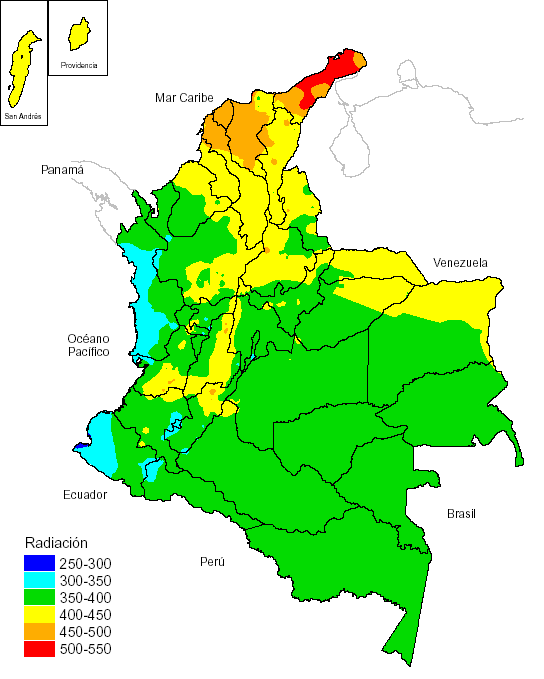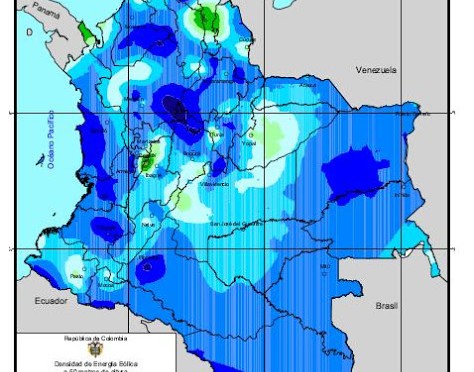The electric current generated by a large part of the unconventional renewable energy projects in the country is almost guaranteed to be delivered to the National Interconnected System (SIN).

The reason, to date, the requests for the connection of 90 complexes of Non-Conventional Renewable Energy Sources (Fncer) that will provide the transmission network with more than 6,274 megawatts (Mw) are approved.
According to the listings of the Energy Mining Planning Unit (Upme), the aforementioned number of guaranteed projects represents an increase of 53% compared to the same period of the previous year.
Likewise, the records of connections to the SIN approved by the said entity indicate that 4,353 Mw correspond to 70 projects with photovoltaic technology, 1,862 Mw to 14 wind initiatives and 59 Mw to six biomass projects.

“In the last year we issued a guarantee for the assembly of 171 renewable energy projects to 130 companies, whose aggregate power totals 2,379 Mw, mainly in small-scale photovoltaic solar and wind energy initiatives, with a potential benefit excluding VAT estimated at $ 66,000 million pesos, ”said Ricardo Ramírez, director of the Upme.
The official stressed that the growth not only in the number of guarantees for the assembly of projects, but also in the approval of connection requests is due to the interest of investors to avail themselves of tax incentives (Law 1715 of 2014).
COMPLEMENT THE ELECTRICAL MATRIX
For his part, the Executive Director of the Association of Renewable Energies (SER Colombia), Germán Corredor, stressed that the country has enormous potential to develop non-conventional renewable energies, but above all, it has the pressing need to complement the electrical matrix and strengthen it to make it more reliable, safe and competitive.
The union leader, who represents 67 companies in the sector, has explained in several scenarios that industry calculations allow him to establish that Colombia would generate between 15% and 20% of its electric matrix with solar and wind energy by 2030.
“It is key that those who develop renewable energy projects, have established in advance the layout of the connection lines to deliver the current to the SIN and avoid the time spaces between the operation entrance and its emission,” said Corredor.
He has even said that with this first step the picture is clear so that the country can reach 2030 with more than 15% in the generation matrix for renewable sources.
CARIBBEAN COAST, WITH THE GREATEST NUMBER
The application records for connections approved by the Upme show that most projects are located in the departments of La Guajira, Cesar, Atlántico, Bolívar, Tolima, Magdalena, Valle del Cauca and Cauca. However, it also highlights that initiatives planned in Huila, Boyacá and the Llanos Orientales are on the way.
An analysis by the consultant EY for SER Colombia concludes that the greatest potential of renewable resources in generation is held by the departments of La Guajira and Cesar, with the solar and wind initiatives.
This research is verified with technical analysis of the Upme, which show that Colombia has a daily average solar irradiation of 4.5 kilowatt hours per square meter (Kwh / m2), which exceeds the world average of 3.9 kWh / m2 and it is well above the data received in other latitudes. For example, that of Germany, which has 3.0 kWh / m2 per day.
The territory also has particular regions such as La Guajira, a part of the Atlantic coast and other specific areas in Arauca, Casanare, Vichada and El Meta, among others, which have radiation levels above the daily national average of 6.0 kWh / m2
Similar situation happens with the wind projects in assembly located in the Caribbean coast. Data from the aforementioned entity reveal that the force at the level of the winds is at a rate of 11 to 13 meters per second (m / s), sufficient force for the fans to generate electrical energy.
For the director of the Upme, renewable generation projects with an approved application, which are distributed throughout the national territory, will have the capacity to deliver more than 6,000 Mw to the country. The figure attracts attention, especially if one takes into account that today the demand of the country is 10,000 Mw.
The official added that the initiatives can be executed quickly, since the average assembly time is estimated at two years. “The transmission network of the SIN is adequate and does not need major investments so that it can receive the energy emitted by renewable sources,” he said.
The Upme estimates that the energy of these renewable projects would begin to deliver power to the SIN from 2020, since the connection is already guaranteed.


